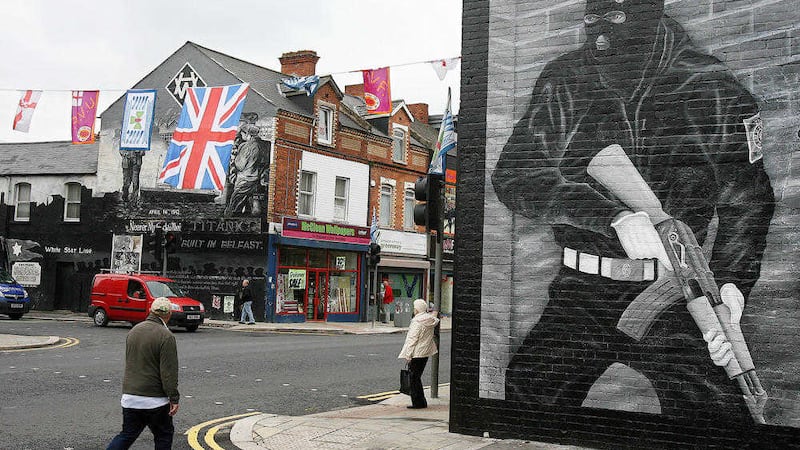Sometimes it takes an outsider’s view to make you look at something familiar with fresh eyes.
Last week, we hosted a group of journalists from Kosovo to Belfast and Derry. They were shocked beyond words at the sight of the 45ft high peace wall at Lanark Way and said they couldn’t understand why people lived beside such structures, and still wanted them to remain in place.
Us locals felt a bit defensive, to be fair. We tried to explain that most people in Northern Ireland lived peaceably with their neighbours, and religion didn’t really divide us – well, apart from schools of course. But the truth is that we’d really begun to see the walls as a tourist sight, and we’d forgotten quite how mad it is that there still so many peace walls, more than 26 years after the Good Friday Agreement.
- Don’t knock the BBC over Kamala love-fest – the media is always attracted to the new and fresh – Mary KellyOpens in new window
- Mary Kelly: Edwin Poots is right about reaching out – but he needs to persuade voters in loyalist areas tooOpens in new window
- Once upon a time and never again – Mary KellyOpens in new window
They were also bemused at the sight of so many flags on main roads – and perplexed to discover Israel and Palestine flags were adopted in some areas in much the same way as opposing football teams.
Sadly, our visitors will hardly leave with a good impression of our transport system. We opted to bring them to Derry by train to give them some nice scenery along the way.

But 10 minutes out of Lanyon Station, the train stopped. Twenty minutes passed before an announcement that a lorry had hit a bridge somewhere unspecified, and engineers needed to assess if it was safe to continue.
More time passed and then we were reversing back to Lanyon, and thence by bus to Antrim. There we caught another train, which had not a single operating toilet. And OK, the knowledgeable conductor could have doubled as a tour guide, but good craic doesn’t replace conveniences.
****

Well, good luck to Claire Hanna, she has her work cut out for her. But then the SDLP has often had a touch of the Mark Twains about it; reports of its demise were often greatly exaggerated.
It was long dominated by big personalities like John Hume and Seamus Mallon, who for all their gifts, didn’t have much of a succession strategy for the party, and they were quickly usurped by the new look Sinn Féin, who wore the green mantle more stylishly.
Hume’s focus on the greater prize of peace before political gain was certainly what was needed at the time. None of his successors could ever disavow it. But while it’s unlikely that the SDLP will ever recover its place as the main representatives of nationalism, if it didn’t exist, we’d probably have to invent it.
Sinn Féin will always represent a type of muscular nationalism that those of us with memories of the conflict may find harder to forget in the privacy of the ballot booth. And we still like to vote, but we’re all getting older.
The job of the SDLP will be to attract younger voters. They can still do that by simply sticking around and sounding sensible. Opposition at Stormont is the best place for them to be, so long as they are effective.
Colum Eastwood did bring energy and youth to the leadership role after the doldrums under Margaret Ritchie and Alasdair McDonnell. But along the way they lost good people like Conall McDevitt and Paul McCusker and the attempt to get an all-Ireland profile by hooking up with Fianna Fáil was both hare-brained and doomed to failure.
Hanna’s instincts were closer to Irish Labour and a tilt leftwards might be still their best option, though a distance from Starmer’s austerity will be necessary.
Eastwood says he wants to concentrate on his constituency as well as the new Ireland project. It’s not entirely convincing a reason to quit, but he could do worse.
Máirtín Ó Muilleoir was right when he said a future united Ireland would be “screwed” if they didn’t have Presbyterians in Ulster on their side. The SDLP are likely to be more persuasive there than Máirtín’s old mates.









